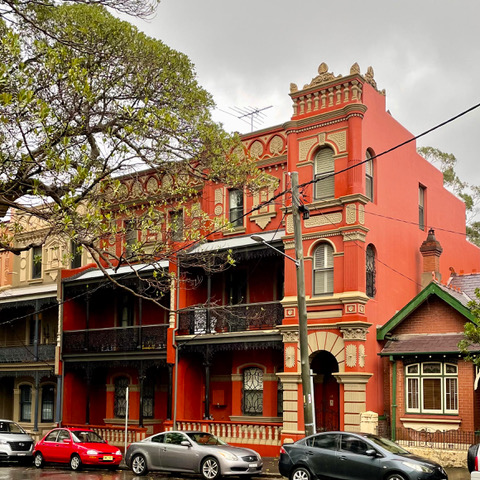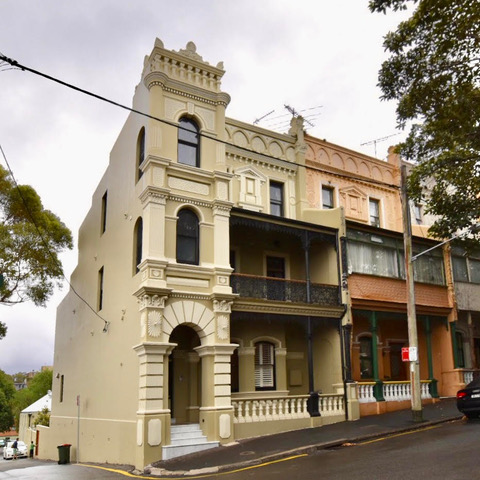Forgotten Architectural Newtown
- neighbourhoodmedia

- Aug 23, 2022
- 3 min read
Updated: Feb 21, 2024
Rediscover the forgotten beauty of Newtown's architectural history.

As the end of the nineteenth century approached, rapid development came to Newtown with farms and estates replaced by Victorian villas and terraces. Some of the most impressive terraces are those along Warren Ball Avenue and Georgina Street, facing into Hollis Park. These homes survive to this date in almost original form and are a prized part of Newtown's architectural history.
Brockleigh

The first in a row of eight Victorian Italianate terraces overlooking Hollis Park, Newtown. John Icke Kettle, a magistrate, purchased a substantial amount of Newtown land in 1846 and subdivided a portion of it for housing in 1851. He held the remainder of land until his death in 1881 when his estate was left for his two daughters, Georgina and Mary Ann. Mary Ann married Robert Brock in 1853 and they had a son, George, in 1855. By 1882, George had assumed the role of developer and further subdivided the family’s land into its present form.
George built eight terraces on a street known as Kettles Avenue from 1884 to 1885. George and his wife occupied the first terrace, Brockleigh, while his aunt Georgina Thruchley occupied the last terrace, the ‘bookends’ of the group. The Kettle Street name was changed to L’Avenue after completion.
All eight terraces were sold as one line in 1908 and the new owners operated them as boarding houses. They were sold again in 1914 and the street name was changed to Warren Ball Avenue, the name it is known by today. Warren Ball was an alderman and local Newtown businessman. The homes changed hands as a group several times until the last owner to purchase the row in 1948 sold off the terraces individually over the next 12 years. Indigenous activist Charles Perkins occupied Brockleigh from 1997 until his death in 2000.
Georgina Street
While residing in Brockleigh, George Brock set about building another 15 terraces on the western side of Hollis Park, perpendicular to the first eight terraces. They were numbered 9–23 L’Avenue, the street known as Georgina Street today. The terraces were completed in 1889, and once again the ‘bookends’ of the group are the standouts featuring turrets with decorative arched entries and an overall larger footprint. The balcony on each terrace is adorned with a cast iron lace frieze and balustrade.
The terrace numbered 23 L’Avenue had stables accessible from the rear lane, which survive to this day. Historical records show a number of Brock family members occupied the terraces following completion. The family offered the terrace numbers 9–23 for auction as advertised by Raine & Horne in the Sydney Morning Herald on 29 November 1906 and by this time the address was known as Georgina Street.
Records show that by 1915 all but one of the terraces was listed as boarding houses in the Sands Directory. Today, the 23 Victorian terraces built by George Brock are considered some of the finest and most sought after in the Newtown area, selling with multi-million dollar price tags.
Enmore

This freestanding Victorian villa was built around 1890 and is one of the grandest homes of its era in Enmore. Set high on a double block, it has sweeping district views from the upper level. Period features include projecting bay windows on both the upper and lower floors, and a decorative iron lace frieze and balustrade to the balconies.
When the home was offered for sale in 2016 the real estate agent noted it was the first time the property was on the market since 1916, marking 100 years of ownership within the same family. Photos from the last sale show it was offered as somewhat of a renovator’s delight. Since then the home has been tastefully and sympathetically restored to its former glory and painted in heritage colours.
By Drew Hoy - Follow him on Instagram @forgottensydney










Comments